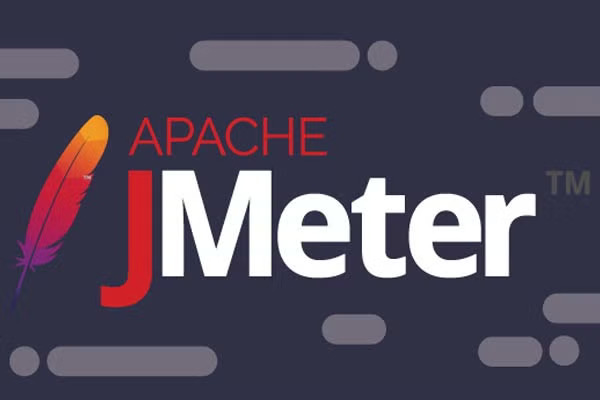Software performance testing evaluates the stability, speed, scalability, reliability, resource usage, and responsiveness of your software and infrastructure.
Consider this your starter guide to performance testing.
Read along or jump to the section that interests you the most:
What is Software Performance Testing?
Software performance testing checks how the system behaves and performs. It examines different characteristics of your software and infrastructure such as responsiveness, stability, scalability, reliability, speed and resource usage.
There are many open-source performance testing tools available that help with creating scripts, such as JMeter, Gatling, Selenium and Taurus. You can also do Locust performance testing using Java and Kotlin.
When it comes to monitoring the metrics of the scripts, there are some options:
- Use built-in capabilities found in JMeter, Locust, Gatling and other open-source tools.
- Work with powerful testing platforms (like BlazeMeter).
- Have some in-house tools inside their company designed to monitor the load scripts in progress.
- Build a comprehensive performance monitoring solution from scratch using open source tools like Docker, Grafana, and InfluxDB.
Learn more about… Performance Testing With Open Source Tools |
When Should You Use Performance Testing?
If you follow a more traditional development and testing methodology (such as waterfall), you will test at least each time a version is released. If you are adopting an agile methodology (which we highly recommend), you should test continuously.
When shifting left, you can run BlazeMeter performance tests using various tools such as Drone.io, Jenkins, and Docker.
Learn more about… Shifting Left Using Jenkins & BlazeMeter |
Types of Performance Testing
Different types of performance tests provide you with different data. Teams often compare performance testing vs. load testing vs. stress testing. It is also important to compare functional testing vs. performance testing and know which is suitable for which situation. One of the biggest struggles faced by many performance testing engineers when running tests from a cloud environment is how to do firewall performance testing, or test behind their company’s firewall.
Not only do we have to keep in mind which type of performance test to execute but also when should we run it. If we are shifting left, we should test continuously.
Learn more about… Performance Testing vs. Load Testing vs. Stress Testing
| Image

|
Experience the ultimate in software performance testing with BlazeMeter. Start testing for FREE today! |
Website Performance During Peak Events
Imagine a high traffic day like Black Friday is around the corner. If you have an e-commerce website, you will want to execute a wide range of performance tests to make sure your website is responding as expected and supporting the increased traffic engaging with the site.
When automating your workflow, it is important to remember that most e-commerce websites use a third-party integration to process payments. If we included these requests in our tests, we would be generating load to the third-party endpoint too. To avoid that, we should use mock services.
Some performance testing tips you need to know before executing testing your website under pressure include:
- Run your load tests from the production environment during a time you know traffic is low. This is the only way to ensure your testing is accurate and that each point is tested properly.
- Scale your software performance tests gradually so you do not miss problems at earlier load levels.
- Monitor important backend results such as Response Time, Latency, Cache Hits, and DB Queries.
Learn more about… How to Use Mock Services in BlazeMeter |
Performance Testing for APIs
APIs should be functionally correct, as well as available, fast, secure and reliable. That being the case, you will want to execute performance tests to be sure your servers are accessible to all users, even under a heavy load, and there are no API delays. But how can you do it? You can use three of the most useful API performance testing tools to test at the API level: JMeter, Taurus, and BlazeMeter.
As you get more involved with API performance testing, don’t get lost in the jargon. Some popular API terminology you should familiarize yourself with includes:
- API functional tests.
- API load tests.
- Peak and spike tests.
- Endpoint vs. scenario testing.
Learn more about… API Performance Testing Tools: JMeter, Taurus, and BlazeMeter
|  |
Performance Testing With Open-Source JMeter
JMeter is an open-source tool used for performance testing. It can be used on any platform that supports Java, which makes it a good option for automating and executing performance tests. Let’s get started and talk about all that we can do with this tool.
As a more basic JMeter overview, it allows you to simulate a wide variety of use cases, that can go from an e-commerce website to a desktop application. Some of these use cases might be more complex than others and you will have to extract data from files, JMeter performance testing that includes uploading and downloading files, work with OAuth secured apps, or do some customization to the script. It also provides you with a large list of plugins to help you monitor your server health and track other JMeter performance metrics.
You can also use JMeter to run performance tests on relational (Blob from MySQL) and non-relational (MongoDB) databases (such as MongoDB performance testing). BlazeMeter offers various JMeter tutorials from the most basic to more advanced levels of testing.
Sometimes when executing the scripts, you can run into an “Out of Memory” error message. In this case, there are some easy solutions that you can try to solve the issue of JMeter memory profiling.
If you are a JMeter and Docker user, it is useful to have a set of Docker images or containers available for performance testing as it is a set of multiple tools ready to use.
This tool sounds promising, but many also compare JMeter to Locust, a code-based framework that provides outstanding capabilities for writing your test in Python language. Teams can also expand on JMeter’s performance testing capabilities with commercial platforms like BlazeMeter.
Learn more about… Getting Started With JMeter |  |
Try BlazeMeter
BlazeMeter was designed and built by engineers who are passionate about open source. From mobile to mainframe, IDE or UI, BlazeMeter brings teams together on a single platform with shared visibility, tests, and reports. Developers and testers can work together, using the same tool, but focus on their level of expertise.
The best part?
BlazeMeter provides it all: performance, functional, scriptless, API testing and monitoring, test data, and mock services.
Enterprise organizations like BT and the New York Times use BlazeMeter to prepare their applications for peak traffic events. With BlazeMeter, development teams can speed their digital transformation and shift quality left.